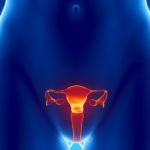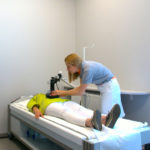 Wróć do poprzedniej strony
Wróć do poprzedniej strony
Cervical cancer – symptoms, treatment, causes, diagnosis

Cervical cancer is a neoplasm originating from the epithelial cells of the cervix (Latin: cervix) connecting the uterine cavity to the vagina. In most cases, cervical cancer develops due to infection with oncogenic types of human papillomavirus (HPV).
Infection usually occurs through sexual contact. The immune system of most women is capable of containing the virus.
Cervical cancer - treatment
Integrative Oncology Care
At IMC, you will benefit from Integrative Oncology Care designed to speed up physical and emotional recovery, improve quality of life, better tolerate treatment-related side effects and prevent relapse.
An integrative program for cancer treatment can be applied to start from the initial to the advanced stages of cancer, even during the phases when conventional medicine has nothing more to offer. The first step of the integrative approach is a precise and detailed assessment of the patient’s physical, emotional, and body state. The doctor collects the results of biochemical tests, molecular tests, clinical examinations, information about other illnesses, lifestyle, diet, and emotional state. Since the patient’s biological state changes during therapy, the treatment program is updated according to the laboratory and clinical tests. Every aspect of the treatment program is personalized to suit each patient’s individual needs.
Treatment includes:
- integrative medical consultation and monitoring,
- ten sessions of local hyperthermia,
- ozone therapy (autochem transfusions), intravenous vitamin infusions, ultrasound, laboratory tests, psychotherapy, and group workshops such as mindfulness, breathing,
- accommodation, and personalized nutrition.
Contact us:
1. Call us: +48 730 597 597
2. Send application form
- Go to Natural cancer treatment
- At the bottom of the page, select your disease
- Complete the form and we will contact you
Treatment of cervical cancer depends on several factors, including stage, histologic type, presence of other diseases, and personal preference for the treatment method.
The main treatment methods include:
- Surgery: Depending on the location and size of the cancerous focus, surgery: hysterectomy can be partial (removal of the body of the uterus) or total (removal of the entire uterus).
- Radiation therapy: the choice of irradiation method depends on the size of the focus; brachytherapy (direct, contact irradiation of lesions) is used for smaller lesions. Radiation therapy can be used alone or in combination with chemotherapy. It is often used preoperatively (to shrink the tumor) or postoperatively to destroy any cancer cells that may remain after surgery.
- Chemotherapy: given in small doses along with radiation therapy to increase its effect. Chemotherapy in large amounts is often used for advanced stages of cervical cancer to control the tumor. Certain types of chemotherapy can cause infertility and the earlier onset of menopause.
Local hyperthermia
Numerous clinical trials (ranked at Level 1 of credible scientific evidence) have shown that the use of hyperthermia and radiation therapy for advanced-stage cervical cancer has significantly better results than standard therapy alone. The use of hyperthermia substantially increases the effectiveness of treatment and prolongs the survival of patients. These studies have proven the effectiveness of hyperthermia. In the Netherlands, using hyperthermia has become the basis for reimbursement for cervical cancer treatment.
Cervical cancer - symptoms
Cervical cancer, as the disease progresses, may show the following symptoms:
- during the cycle or after the menopausal period, watery or bloody discharge with an unpleasant odor
- lower abdominal pain
- pain during intercourse or pain in the sacral-lumbar region.
If the above symptoms appear, you should immediately see a doctor.
Often patients do not experience any symptoms related to the disease because, in the early stages of cervical cancer, the symptoms are absent or uncharacteristic.
Cervical cancer - causes, risk factors
The cause of cervical cancer is not apparent. However, there is no doubt that the sexually transmitted HPV virus plays a vital role in cancer development. Although HPV is omnipresent, not every woman infected with the virus develops cervical cancer. Researchers suggest that other factors, such as genetics, environment, diet, and lifestyle, affect whether cancer will develop.
The development of cervical cancer is preceded by a genetic mutation that causes physiological cells to become cancer cells. Healthy cells mature and reproduce at a specific frequency and die after completing an entire cell cycle. Cancer cells, however, replicate at an unlimited rate and do not undergo the physiological process of death. Thus, they form tumors that can form metastatic foci.
Cervical cancer – risk factors
- Numerous sexual partners. The greater the number of sexual partners (the woman and her partner), the greater the risk of HPV infection.
- Early onset of sexual intercourse. Infections with chlamydia, HIV, CMV, EBV, syphilis, and gonorrhea increase the risk of HPV infection.
- Presence of other infections and sexually transmitted diseases. Infections with chlamydia, HIV, CMV, EBV, syphilis, gonorrhea increase the risk of HPV infection
- Reduced immunity. Most women infected with HPV do not develop cervical cancer. Women who are infected with HPV and have a weakened immune system are more likely to develop cervical cancer. (e.g., if they are immunosuppressed or have another comorbidity).
- Cigarette smoking. Studies indicate an increased risk of HPV infection among women who are heavy smokers.
Types of Cervical Cancer:
The type of cells in which mutations occur determines the histological type of cervical cancer. Becoming aware of the type is essential because it allows the selection of appropriate treatment and determines the prognosis. The main types of cancer are:
- squamous cell carcinoma: the most common, originates from the flat epithelial cells lining the cervical canal
- Adenocarcinoma of the cervix: derived from the epithelial cells of the cervix. Sometimes, both types co-occur.
Sometimes both types co-occur.
Rarely cancers derived from another cell type are reported.
Cervical cancer - diagnosis, how to detect?
Cervical cancer detected at an early stage allows for more effective treatment. According to recommendations, screening should be performed starting at age 21. Screening tests for cervical cancer include:
- Cytological smear A smear is performed using special brushes that collect cells inside and outside the cervix. The collected material is transferred to a slide and evaluated cytologically.
- HPV DNA test-If you are over the age of 30; your doctor may order an HPV DNA test to determine if you are infected with the HPV virus, which can lead to cervical cancer
Cervical cancer-diagnosis
If symptoms indicating cervical cancer appear, or if the results of a cytology test indicate the presence of cancer cells, you may undergo further testing to verify the diagnosis:
- Colposcopy: a specialized test performed with an optical camera that illuminates the inside of the cervix. The doctor may take a slice for histopathological analysis if characteristical changed areas are discovered.
- Biopsy: a procedure that involves taking material from appropriately altered cervix areas for analysis.
- Conization: involves the excision of a cone of tissue from the vaginal part of the cervix.
Based on the fragment examined, it is determined whether the lesion is a precancerous condition or cancer. If cancer is present, it is necessary to decide on the stage of the disease.
Cervical cancer – advancement of the disease.
- Stage I: cancer is limited to the cervix
- Stage II: cancer extends beyond the cervix and may occupy the vagina in its upper part
- Stage III: cancer infiltrates the uterine wall and the entire vagina
- Stage IV: cancer infiltrates surrounding organs, such as the bladder or rectum; the possible presence of distant metastases to other organs-lungs, liver, and bones.
Contact information
55-010 Żerniki Wrocławskie
Working hours
Have a question?
Use the quick contact form!
Contact information
55-010 Żerniki Wrocławskie




